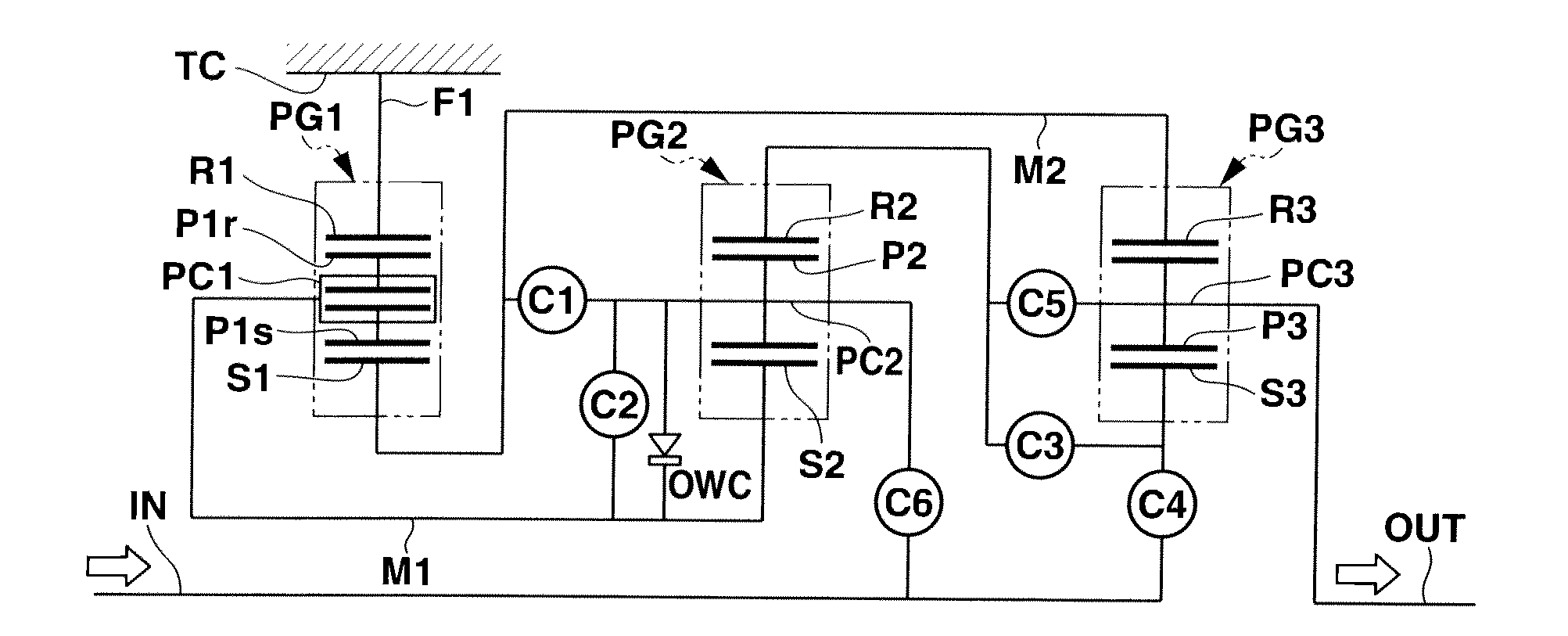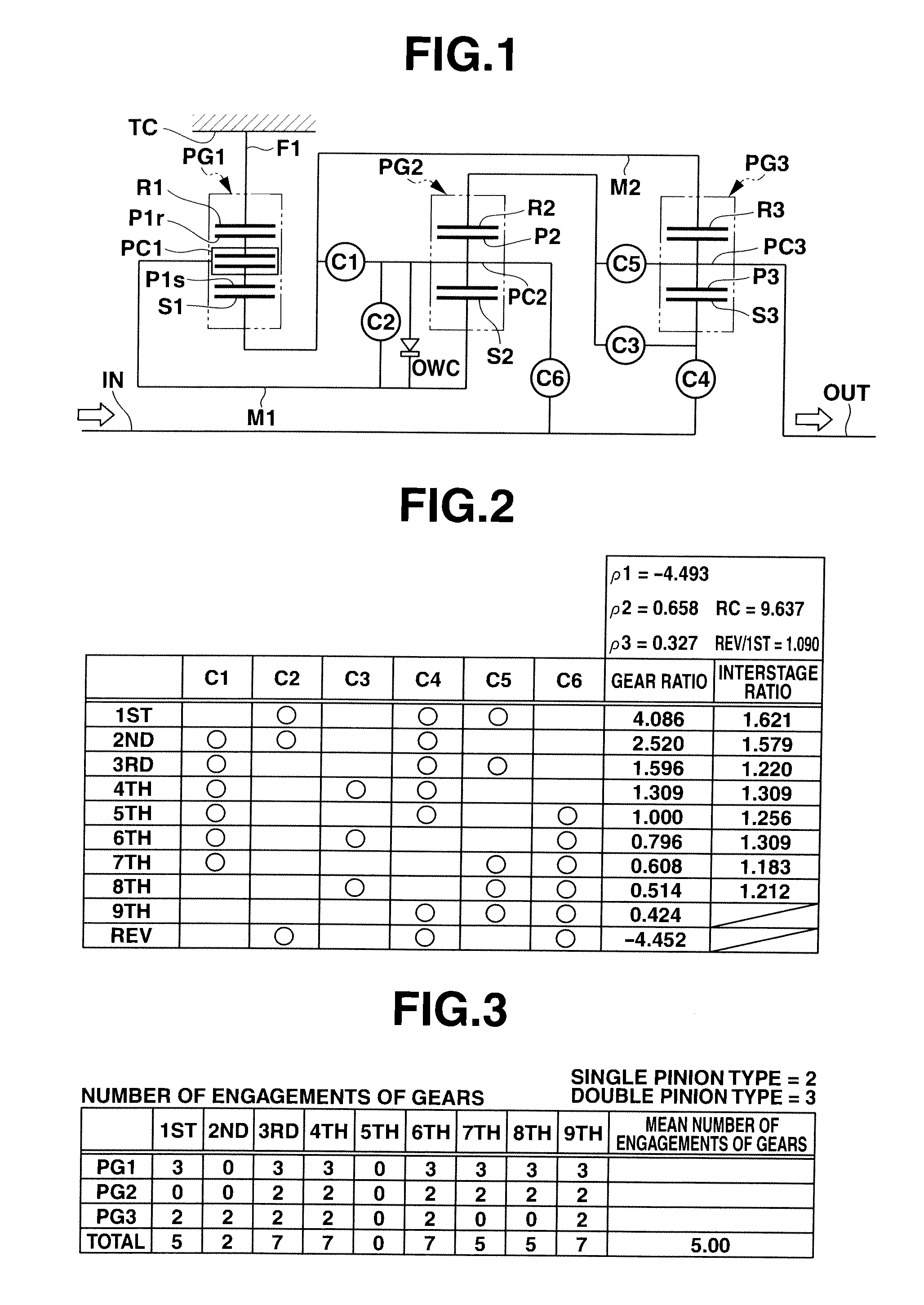Low friction loss automatic transmission
a technology of automatic transmission and low friction loss, which is applied in the direction of mechanical equipment, transportation and packaging, and machining, etc., can solve the problems of low transmission efficiency, low friction loss of engine power, and remarkable friction loss of automatic transmission, so as to reduce the number of frictional elements (or clutches) and reduce the friction loss of the transmission
- Summary
- Abstract
- Description
- Claims
- Application Information
AI Technical Summary
Benefits of technology
Problems solved by technology
Method used
Image
Examples
Embodiment Construction
[0033]In the following, the stepwisely variable automatic transmission of the present invention will be described in detail with reference to the accompanying drawings.
[0034]Referring to FIG. 1, there is schematically shown the stepwisely variable automatic transmission according to the present invention.
[0035]As shown in FIG. 1, the stepwisely variable automatic transmission generally comprises an input shaft IN, an output shaft OUT, a first planetary gear unit PG1, a second planetary gear unit PG2, a third planetary gear unit PG3, a first rotatable member M1, a second rotatable member M2, a first fixing member F1, a first clutch C1 (or first frictional element), a second clutch C2 (or second frictional element), a third clutch C3 (or third frictional element), a fourth clutch C4 (or fourth frictional element), a fifth clutch C5 (or fifth frictional element), a sixth clutch C6 (or sixth frictional element) and a transmission case TC.
[0036]The first planetary gear unit PG1 is of a d...
PUM
 Login to View More
Login to View More Abstract
Description
Claims
Application Information
 Login to View More
Login to View More - R&D
- Intellectual Property
- Life Sciences
- Materials
- Tech Scout
- Unparalleled Data Quality
- Higher Quality Content
- 60% Fewer Hallucinations
Browse by: Latest US Patents, China's latest patents, Technical Efficacy Thesaurus, Application Domain, Technology Topic, Popular Technical Reports.
© 2025 PatSnap. All rights reserved.Legal|Privacy policy|Modern Slavery Act Transparency Statement|Sitemap|About US| Contact US: help@patsnap.com



